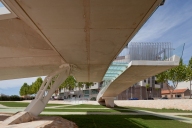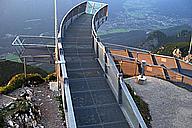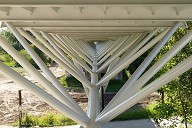Tamed, but not tame
The name AlpspiX depicts a spectacular viewing platform about 1,000 m over the Hell Valley, being opposite of Germany’s highest mountain, the Zugspitze. Two light platforms protrude in the shape of an X into the abyss. However, in case of purposeful movements of the visitors, these platforms vibrated that much that the operator, the Bayerische Zugspitzbahn Bergbahn AG, decided to make the platform also accessible to tourists which are more sensitive to vibrations. The "Damping with residual adventure factor” was implemented by Maurer Söhne, the world wide renowned specialist for structural protection systems.
The inauguration of the AlpspiX platforms was in July 2010. They are located at the "Osterfelderkopf”, which is only 50 m above the mountain terminus of the Alpspitz Track, and thus they also can be reached by inexperienced hikers. This in contrast to the Alpspitz peak which is 550 m further up and which will usually be reached by means of a fixed rope route. The AlpspiX viewing platform facilitates an undisturbed view at its finest. Only a glass plate prevents the free fall at the tip of the platform. And a grid iron allows a look into the abyss 1,000 m below. But that the steel platform were prone to undamped vibrations was not exactly palatable for many visitors. Already a few individual visitors created continuing vibrations in the platforms – not to mention the jaunty groups who purposely created these vibrations.
Dampen, but not fixate
The job instruction for the damper experts of Maurer Söhne was therefore to reduce the vibrations but not completely eliminate, by way of tuned mass dampers. Next to the higher attractiveness of the visitors the owner also considered the service life of the platforms: the less vibrations, the less material fatigue, and thus longer maintenance intervals and longer service life.
The two AlpspiX arms which are each about 17.50 m long are situated on top of each other and protrude in the shape of an X into the abyss. Their load carrying structure consists of two each double-T-girders with cross members. The two platforms are separately constructed and clamped into two foundations each.
The tuned mass dampers had to be installed at the tip of the cantilever, because there the vibrations are the strongest. Furthermore, the 2 tuned mass dampers each should not disturb the free view. Therefore, the 340 mm high dampers were placed under the grid iron, between the longitudinal girders at the tip of the platform.
The four tuned mass dampers of each 340 kg have the shape of flat square boxes with a footprint of 650 x 650 mm. The swinging damper mass of 150 kg each is separated into several steel plates such that it can be adjusted retroactively. The plate stack rests on four steel coils which are mounted on a base plate. The base plate is bolted to the longitudinal girders. For each damper, the frequency of the coils is tuned to the natural frequency of the platform and lie between 2.03 and 2.68 Hz.
Coils plus hydraulics
However, the countereffect of the swinging mass plates alone would not suffice to damp the structure against vibrations which are created by groups acting willfully. For this reason, Maurer integrated in the centre of the mass damper an additional hydraulic damping element which is connected with the mass and acts as internal brake. It converts motional energy into heat, and this way structural vibrations decay very fast. In comparison to the "undamped” state (i.e. without hydraulic damping element) it not only takes more people to trigger a perceptible vibration, but the vibration also decays in the course of a few seconds. The four mass dampers were installed from above in summer 2011, by way of detaching the grid irons, lifting the damper boxes to their location and fixing them. After the inauguration, final measurements were made as well as a fine adjustment of the damper mass.
References
Structure Types
- About this
data sheet - Product-ID
6289 - Published on:
24/05/2013 - Last updated on:
02/04/2022

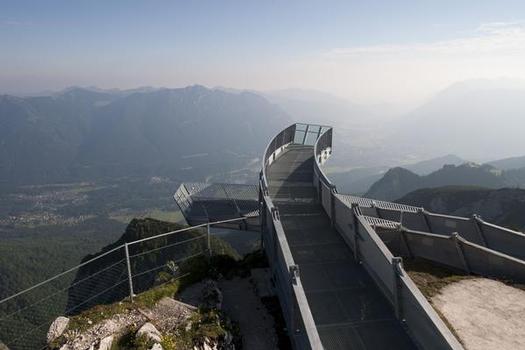
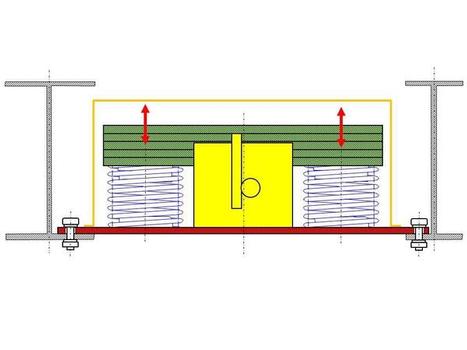
 MAURER SE
MAURER SE 
